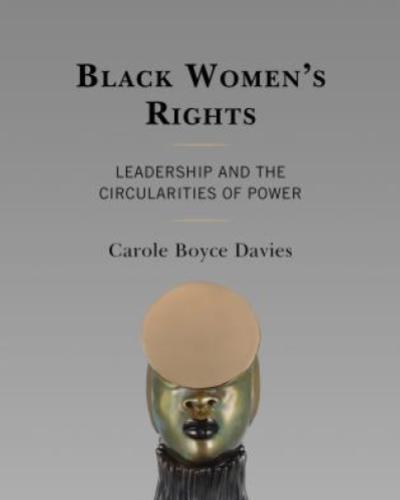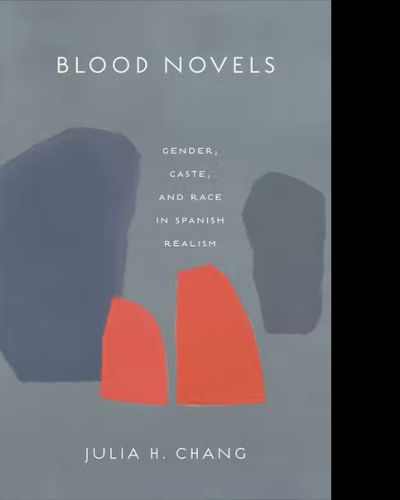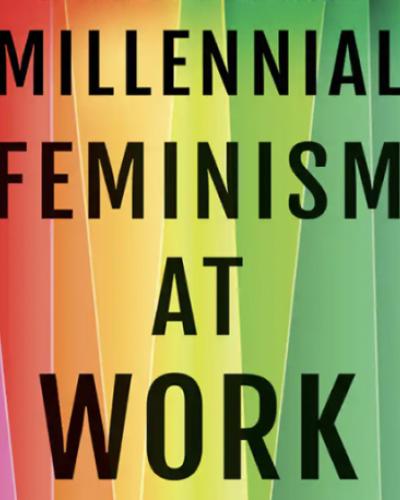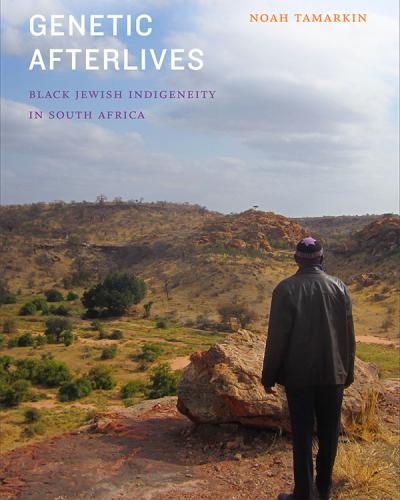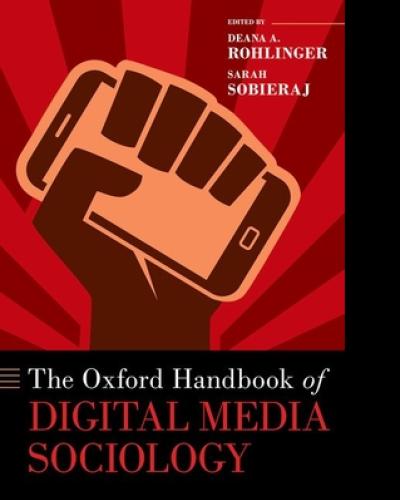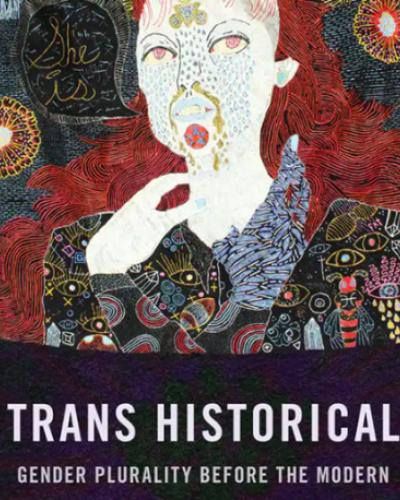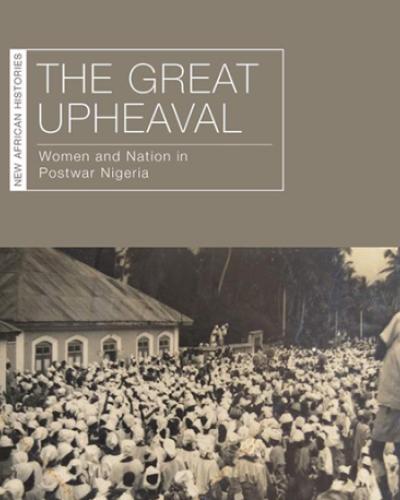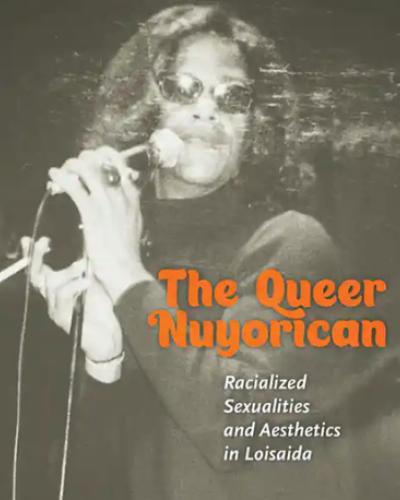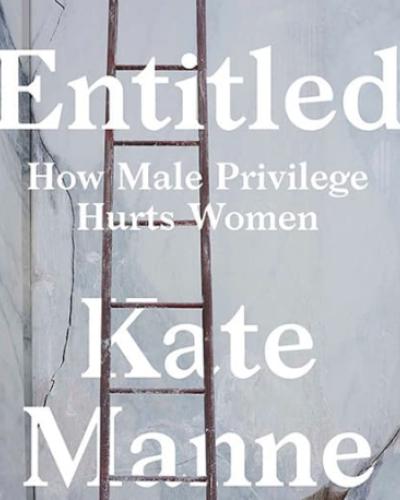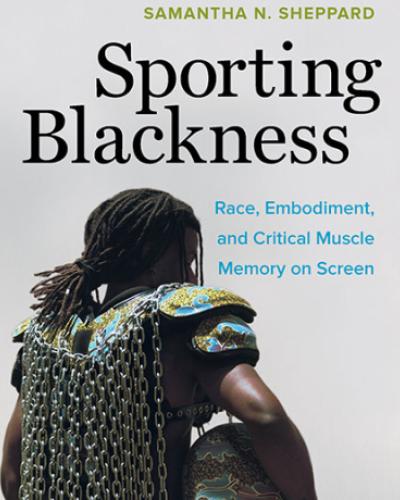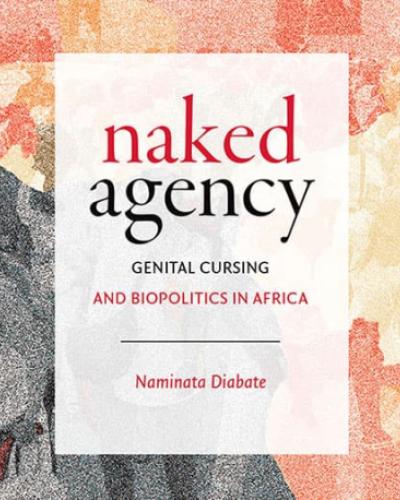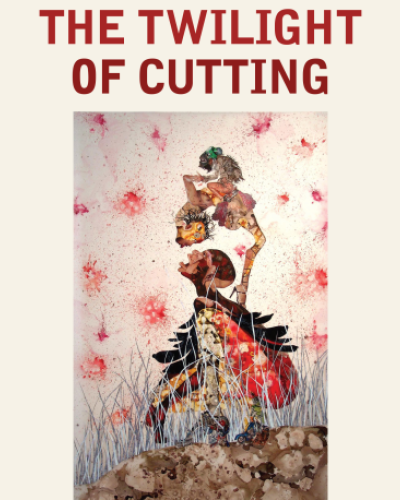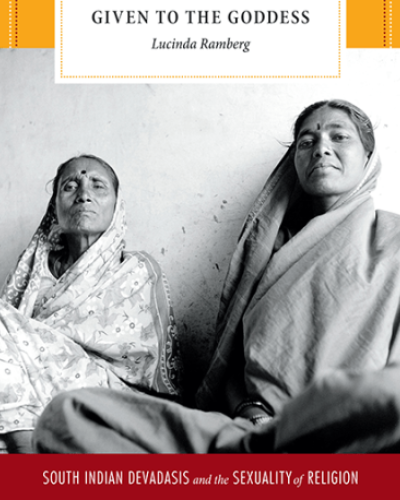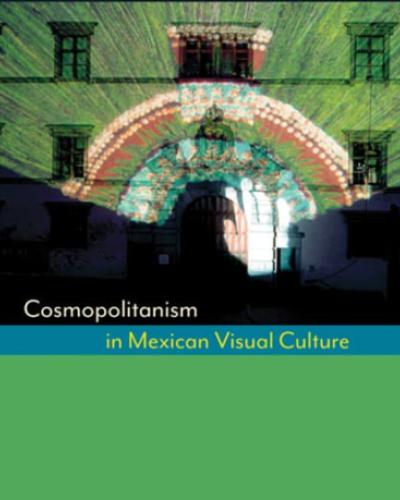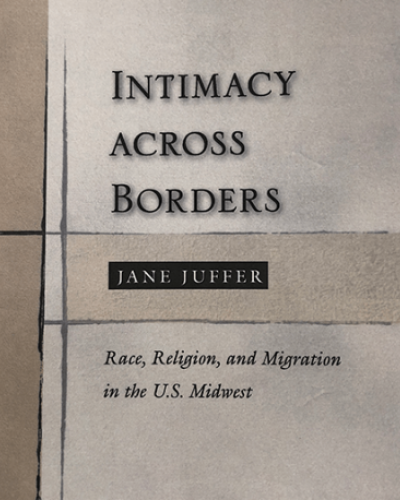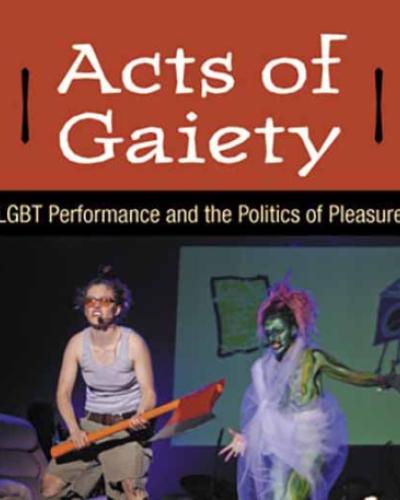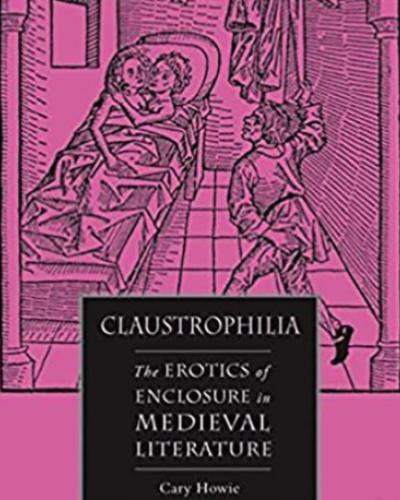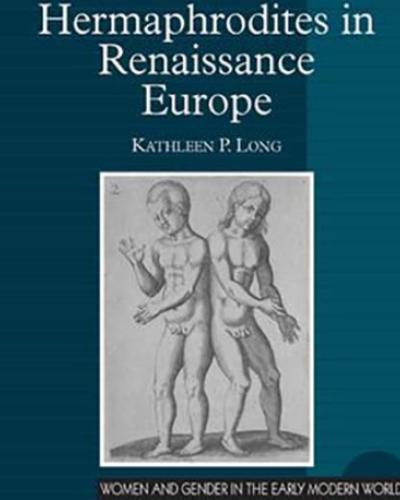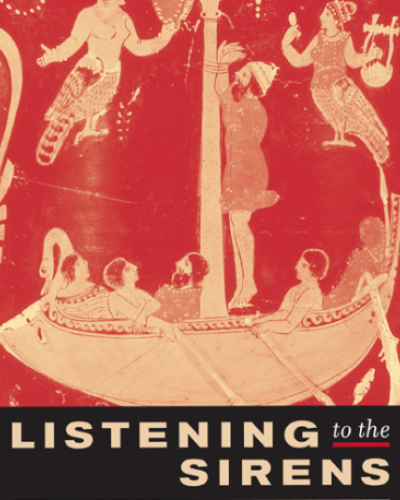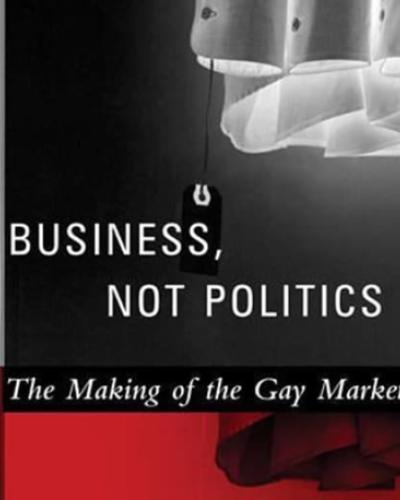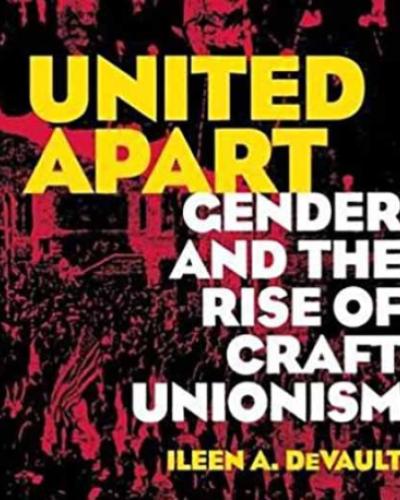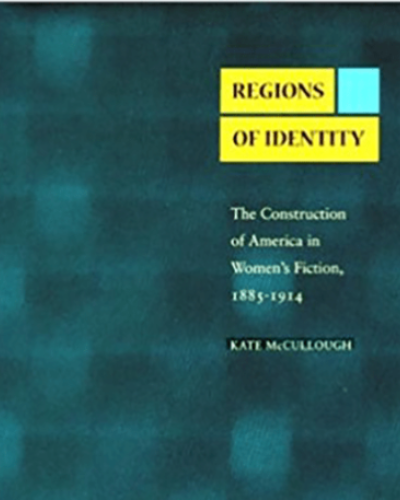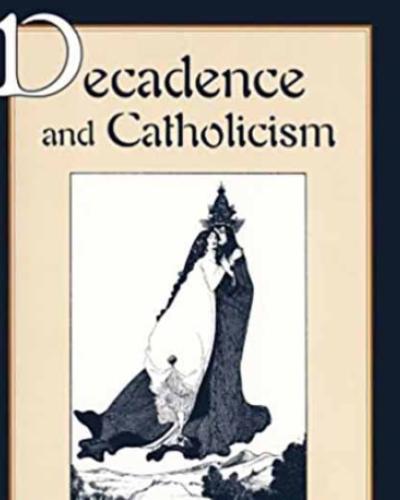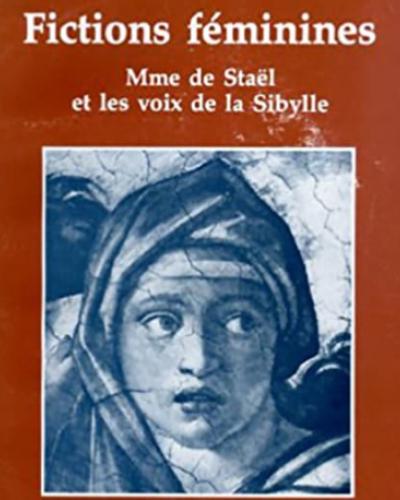Letters from Inside a U.S. Detention Center: Carla's Story
After fleeing homophobia and threats to her life in her native El Salvador, ‘Carla’ was detained for two years inside the Buffalo Federal Detention Center. Her letters provide a powerful and unique account of a queer woman’s experience inside America’s asylum system.
Letters from Inside a U.S. Detention Center reconstructs Carla’s story from the correspondence between Carla and Jane Juffer, a professor at Cornell University, and from excerpts from the legal decisions made while she was being held in immigration detention. Contextualised with explanation and analysis of detention in the United States, the book examines how detention exacerbates the trauma many migrants experience and becomes another site of fear, intimidation, and uncertainty. Carla’s narrative is a powerful story, and one that illustrates grievous injustices in the U.S. immigration and asylum system.
The book will be of immense value to immigration activists and scholars alike, especially in feminist studies, queer studies, and those studying the intersections of prisons and detention centres.
Black Women's Rights: Leadership and the Circularities of Power
Black Women's Rights: Leadership and the Circularities of Power presents Black women as alternative and transformative leaders in the highest political positions and at grassroots community levels. Beginning with a critique of the assumption of an equivalence between masculinity and political leadership, Carole Boyce Davies moves through the various conceptual definitions, intents, and meanings of leadership and the differences in the presentation of practices of leadership by women and feminist scholars. She studies the actualizing of political leadership in the Presidency of Ellen Johnson Sirleaf, the historical role of Shirley Chisholm as the first woman to run for presidency of the United States on a leading party ticket, the promise of the Black left feminist leadership of Brazilian Marielle Franco, and the current model of Prime Minister Mia Mottley of Barbados in advancing new leadership models from the Caribbean. This book proclaims the 21st century as the century for Black women's leadership.
Blood Novels: Gender, Caste, and Race in Spanish Realism
Imprint: University of Toronto Press
Series: Toronto Iberic
Page Count: 256 Pages
Dimensions: 6.00 x 9.00
World Rights
In the late nineteenth century, Spain’s most prominent writers – Juan Valera, Leopoldo Alas, and Benito Pérez Galdós – made blood a crucial feature of their fiction.
Blood Novels examines the cultural and literary significance of blood, unsettling the dominant assumption of the period that blood no longer played a decisive role in social hierarchies. By examining fictional works through the rubric of "blood novels," Julia H. Chang identifies a shared fascination with blood that probes the limits of realism through blood’s dual nature of matter and metaphor. Situating the literature within broader cultural and theoretical debates, Blood Novels attends to the aesthetic contours of material blood and in particular how bleeding is inflected by gender, caste, and race.
Critically engaging with feminist theory, theories of race and whiteness, literary criticism, and medical literature, this innovative study makes a case for treating blood as a critical analytic tool that not only sheds new light on Spanish realism but, more broadly, challenges our understanding of gendered and racialized embodiment in Spain.
Millennial Feminism at Work: Bridging Theory and Practice
EDITED BY JANE JUFFER
In Millennial Feminism at Work, volume editor Jane Juffer brings together recently graduated students from across the US to reflect on the relevance of their feminist studies programs in their chosen career paths. The result is a dynamic collection of voices, shaking up preconceived ideas and showing the positive influence of gender and sexuality studies on individuals at work.
Encompassing five areas—corporate, education, nonprofit, medical, and media careers—these engaging essays use personal experiences to analyze the pressure on young adults to define themselves through creative work, even when that job may not sustain them financially. Obstacles to feminist work conditions notwithstanding, they urge readers to never downplay their feminist credentials and prove that gender and sexuality studies degrees can serve graduates well in the current marketplace and prepare them for life outside of their alma mater.
This collection emphasizes the importance of individual stories situated within political and economic structures to provide collectively spirited advice. Millennial Feminism at Work provides a unique window into the lives and careers of young feminists sharing the lessons they've learned along the way.
Contributors: Rose Al Abosy, Rachel Cromidas, Lauren Danzig, Sadaf Ferdowsi, Reina Gattuso, Jael Goldfine, Sassafras Lowrey, Alissa Medina, Samuel Naimi, Stephanie Newman, Justine Parkin, Lily Pierce, Kate Poor, Laura Ramos-Jaimes, Savannah Taylor, Addie Tsai, Hayley Zablotsky
Genetic Afterlives: Black Jewish Indigeneity in South Africa
In 1997, M. E. R. Mathivha, an elder of the black Jewish Lemba people of South Africa, announced to the Lemba Cultural Association that a recent DNA study substantiated their ancestral connections to Jews. Lemba people subsequently leveraged their genetic test results to seek recognition from the post-apartheid government as indigenous Africans with rights to traditional leadership and land, retheorizing genetic ancestry in the process. In Genetic Afterlives, Noah Tamarkin illustrates how Lemba people give their own meanings to the results of DNA tests and employ them to manage competing claims of Jewish ethnic and religious identity, African indigeneity, and South African citizenship. Tamarkin turns away from genetics researchers' results that defined a single story of Lemba peoples' “true” origins and toward Lemba understandings of their own genealogy as multivalent. Guided by Lemba people’s negotiations of their belonging as diasporic Jews, South African citizens, and indigenous Africans, Tamarkin considers new ways to think about belonging that can acknowledge the importance of historical and sacred ties to land without valorizing autochthony, borders, or other technologies of exclusion.
The Oxford Handbook of Digital Media Sociology
Abstract
Digital media are normal. But this was not always true. For a long time, lay discourse, academic exhortations, pop culture narratives, and advocacy groups constructed new information and communications technologies as exceptional. Whether they were believed to be revolutionary, dangerous, rife with opportunity, or otherworldly, these tools and technologies were framed as extraordinary. But digital media are now mundane, thoroughly embedded—and often unquestioned—in everyday life. Digital media are enmeshed in health and wellness, work and organizations, elections, capital flows, intimate relationships, social movements, and even our own identities. Although the study of these technologies has always been interdisciplinary—at the crossroads of computer science, cultural studies, science and technology studies, and communications—never has a sociological perspective been more valuable. Sociology excels at helping one re-see the normal. The Oxford Handbook of Digital Media Sociology is a perfect point of entry for those curious about the state of sociological research on digital media. Each chapter reviews the sociological research that has been done thus far and points toward unanswered questions. The 33 chapters are arranged in six sections which look at digital media as they relate to theory, social institutions, everyday life, community and identity, social inequalities, and politics and power. The contributors to this volume provide a distinctly sociological center that will be an indispensable resource for scholars looking to find their way in the subfield, offering an overview of the research on digital media that is sure to illuminate this shifting terrain. Readers will find it accessible enough for use in class and thorough enough for seasoned professionals interested in a concise update in their areas of interest.
Trans Historical: Gender Plurality Before The Modern
Trans Historical explores the plurality of gender experiences that flourished before the modern era, from Late Antiquity to the eighteenth century, across a broad geographic range, from Spain to Poland and Byzantium to Boston. Refuting arguments that transgender people, experiences, and identities were non-existent or even impossible prior to the twentieth century, this volume focuses on archives—literary texts, trial transcripts, documents, and artifacts—that denaturalize gender as a category. The volume historicizes the many different social lives of sexual differentiation, exploring what gender might have been before modern medicine, the anatomical sciences, and the sedimentation of gender difference into its putatively binary form.
The volume's multidisciplinary group of contributors consider how individuals, communities, and states understood and enacted gender as a social experience distinct from the assignment of sex at birth. Alongside historical questions about the meaning of sexual differentiation, Trans Historical also offers a series of diverse meditations on how scholars of the medieval and early modern periods might approach gender nonconformity before the nineteenth-century emergence of the norm and the normal.
Platforms and Cultural Production
The rapid spread of digital platforms like YouTube, Instagram, Twitch, and WeChat is reconfiguring cultural production in profound and complex ways. Longstanding media industries are experiencing tremendous upheaval, while new industrial formations – live-streaming, social media influencing, and podcasting, among others – are evolving at a breakneck pace.
Platforms and Cultural Production explores both the processes and implications of platformization in the cultural industries. Poell, Nieborg and Duffy identify key changes in markets, infrastructures, and governance at play in this ongoing transformation, as well as pivotal shifts in the practices of labor, creativity, and citizenship. While foregrounding three industries – news, gaming, and social media entertainment – they also draw upon examples from music, livestreaming, advertising, and more. The book is diverse in its geographic scope, and builds on case studies from North America, Western Europe, Southeast Asia and China to reveal crucial differences and surprising parallels in the trajectories of platformization across the globe.
Combining lively cases with a novel conceptual framework, this book is essential for students, scholars, policy-makers, and practitioners seeking to understand how the institutions and practices of cultural production are transforming in the era of platforms.
The Great Upheaval: Women and Nation in Postwar Nigeria
This social and intellectual history of women’s political activism in postwar Nigeria reveals the importance of gender to the study of nationalism and poses new questions about Nigeria’s colonial past and independent future.
In the years following World War II, the women of Abeokuta, Nigeria, staged a successful tax revolt that led to the formation first of the Abeokuta Women’s Union and then of Nigeria’s first national women’s organization, the Nigerian Women’s Union, in 1949. These organizations became central to a new political vision, a way for women across Nigeria to define their interests, desires, and needs while fulfilling the obligations and responsibilities of citizenship. In The Great Upheaval, Judith A. Byfield has crafted a finely textured social and intellectual history of gender and nation making that not only tells a story of women’s postwar activism but also grounds it in a nuanced account of the complex tax system that generated the “upheaval.”
Byfield captures the dynamism of women’s political engagement in Nigeria’s postwar period and illuminates the centrality of gender to the study of nationalism. She thus offers new lines of inquiry into the late colonial era and its consequences for the future Nigerian state. Ultimately, she challenges readers to problematize the collapse of her female subjects' greatest aspiration, universal franchise, when the country achieved independence in 1960.
The Queer Nuyorican: Racialized Sexualities and Aesthetics in Loisaida
One could easily overlook the Nuyorican Poets Cafe, a small, unassuming performance venue on New York City’s Lower East Side. Yet the space once hosted the likes of Victor Hernández Cruz, Allen Ginsberg, and Amiri Baraka and is widely credited as the homespace for the emergent nuyorican literary and aesthetic movement of the 1990s. Founded by a group of counterculturalist Puerto Rican immigrants and artists in the 1970s, the space slowly transformed the Puerto Rican ethnic and cultural associations of the epithet “Nuyorican,” as the Cafe developed into a central hub for an artistic movement encompassing queer, trans, and diasporic performance.
The Queer Nuyorican is the first queer genealogy and critical study of the historical, political, and cultural conditions under which the term “Nuyorican” shifted from a raced/ethnic identity marker to “nuyorican,” an aesthetic practice. The nuyorican aesthetic recognizes and includes queer poets and performers of color whose writing and performance build upon the politics inherent in the Cafe’s founding. Initially situated within the Cafe’s physical space and countercultural discursive history, the nuyorican aesthetic extends beyond these gendered and ethnic boundaries, broadening the ethnic marker Nuyorican to include queer, trans, and diasporic performance modalities.
Hip-hop studies, alongside critical race, queer, literary, and performance theories, are used to document the interventions made by queer and trans artists of color—Miguel Piñero, Regie Cabico, Glam Slam participants, and Ellison Glenn/Black Cracker—whose works demonstrate how the Nuyorican Poets Cafe has operated as a queer space since its founding. In focusing on artists who began their careers as spoken word artists and slam poets at the Cafe, The Queer Nuyorican examines queer modes of circulation that are tethered to the increasing visibility, commodification, and normalization of spoken word, slam poetry, and hip-hop theater in the United States and abroad.
Emancipation's Daughters: Reimagining Black Femininity and the National Body
In Emancipation's Daughters, Riché Richardson examines iconic black women leaders who have contested racial stereotypes and constructed new national narratives of black womanhood in the United States. Drawing on literary texts and cultural representations, Richardson shows how five emblematic black women—Mary McLeod Bethune, Rosa Parks, Condoleezza Rice, Michelle Obama, and Beyoncé—have challenged white-centered definitions of American identity. By using the rhetoric of motherhood and focusing on families and children, these leaders have defied racist images of black women, such as the mammy or the welfare queen, and rewritten scripts of femininity designed to exclude black women from civic participation. Richardson shows that these women's status as national icons was central to reconstructing black womanhood in ways that moved beyond dominant stereotypes. However, these formulations are often premised on heteronormativity and exclude black queer and trans women. Throughout Emancipation's Daughters, Richardson reveals new possibilities for inclusive models of blackness, national femininity, and democracy.
Entitled: How Male Privilege Hurts Women
An urgent exploration of men’s entitlement and how it serves to police and punish women, from the acclaimed author of Down Girl
“Kate Manne is a thrilling and provocative feminist thinker. Her work is indispensable.”—Rebecca Traister
In this bold and stylish critique, Cornell philosopher Kate Manne offers a radical new framework for understanding misogyny. Ranging widely across the culture, from Harvey Weinstein and the Brett Kavanaugh hearings to “Cat Person” and the political misfortunes of Elizabeth Warren, Manne’s book shows how privileged men’s sense of entitlement—to sex, yes, but more insidiously to admiration, care, bodily autonomy, knowledge, and power—is a pervasive social problem with often devastating consequences.
In clear, lucid prose, Manne argues that male entitlement can explain a wide array of phenomena, from mansplaining and the undertreatment of women’s pain to mass shootings by incels and the seemingly intractable notion that women are “unelectable.” Moreover, Manne implicates each of us in toxic masculinity: It’s not just a product of a few bad actors; it’s something we all perpetuate, conditioned as we are by the social and cultural mores of our time. The only way to combat it, she says, is to expose the flaws in our default modes of thought while enabling women to take up space, say their piece, and muster resistance to the entitled attitudes of the men around them.
With wit and intellectual fierceness, Manne sheds new light on gender and power and offers a vision of a world in which women are just as entitled as men to our collective care and concern.
Sporting Blackness: Race, Embodiment, and Critical Muscle Memory on Screen
Sporting Blackness examines issues of race and representation in sports films, exploring what it means to embody, perform, play out, and contest blackness by representations of Black athletes on screen. By presenting new critical terms, Sheppard analyzes not only “skin in the game,” or how racial representation shapes the genre’s imagery, but also “skin in the genre,” or the formal consequences of blackness on the sport film genre’s modes, codes, and conventions. Through a rich interdisciplinary approach, Sheppard argues that representations of Black sporting bodies contain “critical muscle memories”: embodied, kinesthetic, and cinematic histories that go beyond a film’s plot to index, circulate, and reproduce broader narratives about Black sporting and non-sporting experiences in American society.
Naked Agency: Genital Cursing and Biopolitics in Africa
Across Africa, mature women have for decades mobilized the power of their nakedness in political protest to shame and punish male adversaries. This insurrectionary nakedness, often called genital cursing, owes its cultural potency to the religious belief that spirits residing in women's bodies can be unleashed to cause misfortune in their targets, including impotence, disease, and death. In Naked Agency, Naminata Diabate analyzes these collective female naked protests in Africa and beyond to broaden understandings of agency and vulnerability. Drawing on myriad cultural texts from social media and film to journalism and fiction, Diabate uncovers how women create spaces of resistance during socio-political duress, including such events as the 2011 protests by Ivoirian women in Côte d’Ivoire and Paris as well as women's disrobing in Soweto to prevent the destruction of their homes. Through the concept of naked agency, Diabate explores fluctuating narratives of power and victimhood to challenge simplistic accounts of African women's helplessness and to show how they exercise political power in the biopolitical era.
Don't Use Your Words! Children's Emotions in a Networked World
How children are taught to control their feelings and how they resist this emotional management through cultural production
Today, even young kids talk to each other across social media by referencing memes, songs, and movements, constructing a common vernacular that resists parental, educational, and media imperatives to name their feelings and thus control their bodies. Over the past two decades, children’s television programming has provided a therapeutic site for the processing of emotions such as anger, but in doing so has enforced normative structures of feeling that, Jane Juffer argues, weaken the intensity and range of children’s affective experiences.
Don’t Use Your Words! seeks to challenge those norms, highlighting the ways that kids express their feelings through cultural productions including drawings, fan art, memes, YouTube videos, dance moves, and conversations while gaming online. Focusing on kids between ages five and nine, Don’t Use Your Words! situates these productions in specific contexts, including immigration policy referenced in drawings by Central American children just released from detention centers and electoral politics as contested in kids’ artwork expressing their anger at Trump’s victory. Taking issue with the mainstream tendency to speak on behalf of children, Juffer argues that kids have the agency to answer for themselves: what does it feel like to be a kid?
Decolonizing Extinction: The Work of Care in Orangutan Rehabilitation
In Decolonizing Extinction Juno Salazar Parreñas ethnographically traces the ways in which colonialism, decolonization, and indigeneity shape relations that form more-than-human worlds at orangutan rehabilitation centers on Borneo. Parreñas tells the interweaving stories of wildlife workers and the centers' endangered animals while demonstrating the inseparability of risk and futurity from orangutan care. Drawing on anthropology, primatology, Southeast Asian history, gender studies, queer theory, and science and technology studies, Parreñas suggests that examining workers’ care for these semi-wild apes can serve as a basis for cultivating mutual but unequal vulnerability in an era of annihilation. Only by considering rehabilitation from perspectives thus far ignored, Parreñas contends, could conservation biology turn away from ultimately violent investments in population growth and embrace a feminist sense of welfare, even if it means experiencing loss and pain.
Walking
In this sweet coming-of-age tale, Carole Boyce Davies captures the legend of a man on a secret mission to speed walk around his majestic Caribbean island. But is this rapid moving rebel a madman or are we the crazy ones for standing still while life passes by? Is our speed walker a man ahead of his time? Get ready, get set to go on a high speed tour of your favorite Caribbean island, seen through the eyes of a Caribbean girl.
Global Africa: Into the Twenty-First Century
Professor Judi Byfield co-edited a new volume of essays with Dorothy Hodgson: Global Africa: Into the Twenty-First Century.
Published by University of California Press, this volume documents the significant global connections, circulations and contributions that African people, ideas, and goods have made throughout the world-from the United States and South Asia to Latin America, Europe, and elsewhere.
(Not) Getting Paid to Do What You Love: Gender, Social Media, and Aspirational Work
An illuminating investigation into a class of enterprising women aspiring to “make it” in the social media economy but often finding only unpaid work
Profound transformations in our digital society have brought many enterprising women to social media platforms—from blogs to YouTube to Instagram—in hopes of channeling their talents into fulfilling careers. In this eye-opening book, Brooke Erin Duffy draws much-needed attention to the gap between the handful who find lucrative careers and the rest, whose “passion projects” amount to free work for corporate brands.
Drawing on interviews and fieldwork, Duffy offers fascinating insights into the work and lives of fashion bloggers, beauty vloggers, and designers. She connects the activities of these women to larger shifts in unpaid and gendered labor, offering a lens through which to understand, anticipate, and critique broader transformations in the creative economy. At a moment when social media offer the rousing assurance that anyone can “make it”—and stand out among freelancers, temps, and gig workers—Duffy asks us all to consider the stakes of not getting paid to do what you love.
Gentlemanly Terrorists
Durba Ghosh's new book, Gentlemanly Terrorists, focuses on an underground radical political movement in early and mid-twentieth century India and the ways in which political violence against the British colonial state became an important, but historically underemphasized, form of protest. While Gandhi's nonviolent protest movements are often seen to be the hallmark of anticolonial protest, the book follows how the colonial state invested in security and emergency legislation to contain what they felt was an active terrorist threat.
Ghostly Desires: Queer Sexuality and Vernacular Buddhism in Contemporary Thai Cinema
Through an examination of post-1997 Thai cinema and video art Arnika Fuhrmann shows how vernacular Buddhist tenets, stories, and images combine with sexual politics in figuring current struggles over notions of personhood, sexuality, and collective life. The drama, horror, heritage, and experimental art films she analyzes draw on Buddhist-informed conceptions of impermanence and prominently feature the motif of the female ghost. In these films the characters' eroticization in the spheres of loss and death represents an improvisation on the Buddhist disavowal of attachment and highlights under-recognized female and queer desire and persistence. Her feminist and queer readings reveal the entangled relationships between film, sexuality, Buddhist ideas, and the Thai state's regulation of heteronormative sexuality. Fuhrmann thereby provides insights into the configuration of contemporary Thailand while opening up new possibilities for thinking about queer personhood and femininity.
Obstruction
Can a bout of laziness or a digressive spell actually open up paths to creativity and unexpected insights? In Obstruction Nick Salvato suggests that for those engaged in scholarly pursuits laziness, digressiveness, and related experiences can be paradoxically generative. Rather than being dismissed as hindrances, these obstructions are to be embraced, clung to, and reoriented. Analyzing an eclectic range of texts and figures, from the Greek Cynics and Denis Diderot to Dean Martin and the Web series Drunk History, Salvato finds value in five obstructions: embarrassment, laziness, slowness, cynicism, and digressiveness. Whether listening to Tori Amos's music as a way to think about embarrassment, linking the MTV series Daria to using cynicism to negotiate higher education's corporatized climate, or examining the affect of slowness in Kelly Reichardt's films, Salvato expands our conceptions of each obstruction and shows ways to transform them into useful provocations. With a unique, literary, and self-reflexive voice, Salvato demonstrates the importance of these debased obstructions and shows how they may support alternative modes of intellectual activity. In doing so, he impels us to rethink the very meanings of thinking, work, and value.
The Twilight of Cutting: African Activism and Life After NGOs
Winner, 2017 Michelle Rosaldo Book Prize, presented by the Feminist Anthropology Section of the American Anthropological Association
The last three decades have witnessed a proliferation of nongovernmental organizations engaging in new campaigns to end the practice of female genital cutting across Africa. These campaigns have in turn spurred new institutions, discourses, and political projects, bringing about unexpected social transformations, both intended and unintended. Consequently, cutting is waning across the continent. At the same time, these endings are misrecognized and disavowed by public and scholarly discourses across the political spectrum.
What does it mean to say that while cutting is ending, the Western discourse surrounding it is on the rise? And what kind of a feminist anthropology is needed in such a moment? The Twilight of Cutting examines these and other questions from the vantage point of Ghanaian feminist and reproductive health NGOs that have organized campaigns against cutting for over thirty years. The book looks at these NGOs not as solutions but as sites of “problematization.” The purpose of understanding these Ghanaian campaigns, their transnational and regional encounters, and the forms of governmentality they produce is not to charge them with providing answers to the question, how do we end cutting? Instead, it is to account for their work, their historicity, the life worlds and subjectivities they engender, and the modes of reflection, imminent critique, and opposition they set in motion.
A Plague of Informers: Conspiracy and Political Trust in William III's England
Stories of plots, sham plots, and the citizen-informers who discovered them are at the center of this compelling study of the turbulent decade following the Revolution of 1688. By encouraging informers, imposing loyalty oaths, suspending habeas corpus, and delaying the long-promised reform of treason trial procedure, the Williamite regime protected itself from enemies and cemented its bonds with supporters, but also put its own credibility at risk.
Ethereal Queer: Television, Historicity, Desire
In Ethereal Queer, Amy Villarejo offers a historically engaged, theoretically sophisticated, and often personal account of how TV representations of queer life have changed as the medium has evolved since the 1950s. Challenging the widespread view that LGBT characters did not make a sustained appearance on television until the 1980s, she draws on innovative readings of TV shows and network archives to reveal queer television’s lengthy, rich, and varied history. Villarejo goes beyond concerns about representational accuracy. She tracks how changing depictions of queer life, in programs from Our Miss Brooks to The L Word, relate to transformations in business models and technologies, including modes of delivery and reception such as cable, digital video recording, and online streaming. In so doing, she provides a bold new way to understand the history of television.
Given to the Goddess: South Indian Devadasis and the Sexuality of Religion
Winner, 2015 Michelle Rosaldo Book Prize, presented by the Feminist Anthropology Section of the American Anthropological Association
Cosmopolitanism in Visual Mexican Culture
Since the colonial era, Mexican art has emerged from an ongoing process of negotiation between the local and the global, which frequently involves invention, synthesis, and transformation of diverse discursive and artistic traditions. In this pathfinding book, Maria Fernandez uses the concept of cosmopolitanism to explore this important aspect of Mexican art, in which visual culture and power relations unite the local and the global, the national and the international, the universal and the particular. She argues that in Mexico, as in other colonized regions, colonization constructed power dynamics and forms of violence that persisted in the independent nation-state. Accordingly, Fernandez presents not only the visual qualities of objects, but also the discourses, ideas, desires, and practices that are fundamental to the very existence of visual objects.
Intimacy Across Borders: Race, Religion, and Migration in the U.S. Midwest
"Intimacy across Borders is a stimulating, original, and nuanced understanding of immigration, desire, and encounter. Juffer’s book has both a tone of urgency and a contemporary relevance that are compelling. She deftly uses the frameworks of personal experience and cultural studies to bring together theories of encounter with actual lived experience. Her anchoring the text in the Reformed Church communities of Iowa is sophisticated, and the religious and cultural material is well integrated. Intimacy across Borders will advance the understanding of intercultural encounters from a theological and philosophical as well as a sociological perspective."
—Ann Hostetler, Professor of English at Goshen College
Examining how encounters produced by migration lead to intimacies-ranging from sexual, spiritual, and neighborly to hateful and violent, Jane Juffer considers the significant changes that have occurred in small towns following an influx of Latinos to the Midwest.
Intimacy across Borders situates the story of the Dutch Reformed Church in Iowa and South Africa within a larger analysis of race, religion, and globalization. Drawing on personal narrative, ethnography, and sociopolitical critique, Juffer shows how migration to rural areas can disrupt even the most thoroughly entrenched religious beliefs and transform the schools, churches, and businesses that form the heart of small-town America. Conversely, such face-to-face encounters can also generate hatred, as illustrated in the increasing number of hate crimes against Latinos and the passage of numerous anti-immigrant ordinances.
Juffer demonstrates how Latino migration to new areas of the U.S. threatens certain groups because it creates the potential for new kinds of families—mixed race, mixed legal status, and transnational—that challenge the conservative definition of community based on the racially homogeneous, coupled, citizen family.
Acts of Gaiety: LGBT Performance and the Politics of Pleasure
Acts of Gaiety explores the mirthful modes of political performance by LGBT artists, activists, and collectives that have inspired and sustained deadly serious struggles for revolutionary change. The book explores antics such as camp, kitsch, drag, guerrilla theater, zap actions, rallies, manifestos, pageants, and parades alongside more familiar forms of "legitimate theater." Against queer theory's long-suffering romance with mourning and melancholia and a national agenda that urges homosexuals to renounce pleasure if they want to be taken seriously by mainstream society, Acts of Gaiety seeks to reanimate notions of "gaiety" as a political value for LGBT activism.
The book mines the archives of lesbian-feminist activism of the 1960s-70s, highlighting the outrageous gaiety that lay at the center of the social and theatrical performances of the era and uncovering original documents long thought to be lost. Juxtaposing historical figures such as Valerie Solanas and Jill Johnston with more recent performers and activists (including Hothead Paisan, Bitch & Animal, and the Five Lesbian Brothers), Warner shows how reclaiming this largely discarded and disavowed past elucidates possibilities for being and belonging. Acts of Gaiety explores the mutually informing histories of gayness as politics and as joie de vivre, along with the centrality of liveliness to queer performance and protest.
Crafting the Quantum: Arnold Sommerfeld and the Practice of Theory, 1890-1926
Arnold Sommerfeld (1868–1951) was among the most significant contributors to the birth of modern theoretical physics. At the University of Munich, beginning in 1906, he trained two generations of theoretical physicists. Eight of his students (among them Werner Heisenberg, Wolfgang Pauli, and Hans Bethe) went on to win the Nobel Prize. In Crafting the Quantum, Suman Seth offers the first English-language book-length study of Sommerfeld’s work, presenting an intellectual and cultural history of theoretical physics in Germany viewed through the lens of Sommerfeld’s research and pedagogy.
Seth examines the practical origins of many of the problems undertaken by Sommerfeld and his school, a number of which carried over from his years of teaching at an engineering school. Some of this research was later applied by his students during World War I to such problems as the stability of aircraft wings and the functioning and directional operation of antennas. Seth describes in detail Sommerfeld’s pedagogical practice, including his characteristic amalgamation of research and teaching. He relates the history of the “older” quantum theory and Sommerfeld’s engagement with the work of Max Planck and Niels Bohr and compares Sommerfeld’s “physics of problems” to Planck’s and Bohr’s more abstract “physics of principles.” To illuminate the nature of Sommerfeld’s work, Seth offers detailed descriptions of the contrasting work of other theorists. Seth’s innovative account challenges idealist depictions of the nature of theoretical work in physics, describing not only modes of practice but also the multiple areas of intellectual, political, and social life from which science draws resources and to which it contributes.
Gender and Scientific Discourse in Early Modern Culture
Edited by Kathleen Long
From the publisher:
In the wake of new interest in alchemy as more significant than a bizarre aberration in rational Western European culture, this collection examines both alchemical and medical discourses in the larger context of early modern Europe. How do early scientific discourses infiltrate other cultural domains such as literature, philosophy, court life, and the conduct of households? How do these new contexts deflect scientific pursuits into new directions, and allow a larger participation in the elaboration of scientific methods and perspectives? Might there have been a scientific subculture, particularly surrounding alchemy, which allowed women to participate in scientific pursuits long before they were admitted in an investigative capacity into official academic settings? This volume poses those questions, as a starting point for a broader discussion of scientific subcultures and their relationship to the restructuring and questioning of gender roles.
Sanctity and Pornography in Medieval Culture
by Cary Howie and Bill Burgwinkle
From the publisher:
Sanctity and pornography in medieval culture exposes the complexity of bodily exposure in medieval devotion and contemporary pornographic cultures. Through readings of texts and images, sacred and profane, from preimodern France and Italy as well as Anglo-American modernity, the book makes a case for paying closer attention to the surfaces of our bodies and the desires that those surfaces can articulate and arouse.
From the Old French life of Saint Alexis to the work of writer-filmmaker Miranda July, from Wakefield Poole to Pietro Aretino, these are texts and images that diminish the distance between premodern Europe and contemporary California, between the sacred and the profane, as they demonstrate how, in the end as in the beginning, the surface of things is never simple.
Body Against Soul: Gender and Sowlehele in Middle English Allegory
In medieval allegory, Body and Soul were often pitted against one another in debate. In Body Against Soul: Gender and Sowlehele in Middle English Allegory, Masha Raskolnikov argues that such debates function as a mode of thinking about psychology, gender, and power in the Middle Ages. Neither theological nor medical in nature, works of sowlehele (“soul-heal”) described the self to itself in everyday language—moderns might call this kind of writing “self-help.” Bringing together contemporary feminist and queer theory along with medieval psychological thought, Body Against Soul examines Piers Plowman, the “Katherine Group,” and the history of psychological allegory and debate. In so doing, it rewrites the history of the Body to include its recently neglected fellow, the Soul.
The topic of this book is one that runs through all of Western history and remains of primary interest to modern theorists—how “my” body relates to “me.” In the allegorical tradition traced by this study, a male person could imagine himself as a being populated by female personifications, because Latin and Romance languages tended to gender abstract nouns as female. However, since Middle English had ceased to inflect abstract nouns as male or female, writers were free to gender abstractions like “Will” or “Reason” any way they liked. This permitted some psychological allegories to avoid the representational tension caused by placing a female soul inside a male body, instead creating surprisingly queer same-sex inner worlds. The didactic intent driving sowlehele is, it turns out, complicated by the erotics of the struggle to establish a hierarchy of the self’s inner powers.
“Raskolnikov deftly shows how gender is staged in the context of allegorical debates on death and life. Raskolnikov’s brilliance is to show how voices are split and allocated to various figures, often personified as male and female, and how these talking figures debate not only the place and meaning of the body, but questions of moral harm and the possibility of true knowledge. These debates are hardly philosophy in a recognizable sense, but they do engage philosophical questions through giving voice to various gendered characters. What emerges time and again is a self in a distanced relation to itself, often embattled, often split, for these dialoguing characters are and are not separate. What becomes clear throughout these debates is that the action involved is often capricious and arbitrary, and so the question of free will, of the efficacy of human action in the face of contingency, is posed again and again in a dramatic and dialogic genre whose action or plot lacks all signs of Aristotelian likelihood and probability. The book works in a subtle and surprising way to locate gender as a point of view, showing how personifications essential to the debate genre show the contours of gender and subjectivity as they are assumed through speech. This is a disorientingly smart and engaging text, essential to the early modern understanding of gender.” —Judith Butler, Maxine Elliot Professor at the University of California, Berkeley
Claustrophilia: The Erotics of Enclosure in Medieval Literature
From the publisher:
Through extended readings of English, French, and Italian writers of the Thirteenth and Fourteenth centuries, Claustrophilia shows that medieval enclosures actually make room for desires and communities that a poetics of pure openness would exclude.
Hermaphrodites in Renaissance Europ
From the publisher:
Kathleen Long explores the use of the hermaphrodite in early modern culture wars, both to question traditional theorizations of gender roles and to reaffirm those views. These cultural conflicts were fueled by the discovery of a new world, by the Reformation and the backlash against it, by nascent republicanism directed against dissolute kings, and by the rise of empirical science and its subsequent confrontation with the traditional university system. For the Renaissance imagination, the hermaphrodite came to symbolize these profound and intense changes that swept across Europe, literally embodying these conflicts. Focusing on early modern France, with references to Switzerland and Germany, this work traces the symbolic use of the hermaphrodite across a range of disciplines and domains - medical, alchemical, philosophical, poetic, fictional, and political - and demonstrates how these seemingly disparate realms interacted extensively with each other in this period, also across national boundaries. This widespread use and representation of the hermaphrodite established a ground on which new ideas concerning sex and gender could be elaborated by subsequent generations, and on which a wide range of thought concerning identity, racial, religious, and national as well as gender, could be deployed.
Listening to the Sirens: Musical Technologies of Queer Identity from Homer to Hedwig
In this fresh and innovative study, Judith A. Peraino investigates how music has been used throughout history to call into question norms of gender and sexuality. Beginning with a close examination of the mythology surrounding the sirens—whose music seduced Ulysses into a state of mind in which he would gladly sacrifice everything for the illicit pleasures promised in their song—Peraino goes on to consider the musical creatures, musical gods and demigods, musical humans, and music-addled listeners who have been associated with behavior that breaches social conventions. She deftly employs a sophisticated reading of Foucault as an organizational principle as well as a philosophical focus to survey seductive and transgressive queerness in music from the Greeks through the Middle Ages and to the contemporary period. Listening to the Sirens analyzes the musical ways in which queer individuals express and discipline their desire, represent themselves, build communities, and subvert heterosexual expectations. It covers a wide range of music including medieval songs, works by Handel, Tchaikovsky and Britten, women's music and disco, performers such as Judy Garland, Melissa Etheridge, Madonna, and Marilyn Manson, and the movies The Rocky Horror Picture Show and Hedwig and the Angry Inch.
Business, Not Politics: The Making of the Gay Market
In a hard-hitting book that refutes conventional wisdom, Katherine Sender explores the connection between the business of marketing to gay consumers and the politics of gay rights and identity. She disputes some marketers'claims that marketing appeals to gay and lesbian consumers are a matter of "business, not politics" and that the business of gay marketing can be considered independently of the politics of gay rights, identity, and visibility. She contends that the gay community is not a preexisting entity that marketers simply tap into; rather it is a construction, an imagined community formed not only through political activism but also through a commercially supported media. She argues that marketing has not only been formative in the constitution of a GLBT community and identity but also has had significant impact on the visibility of gays and lesbians.
Facing America: Iconography and the Civil War
Facing America: Iconography and the Civil War investigates and explains the changing face of America during the Civil War. To conjure a face for the nation, author Shirley Samuels also explores the body of the nation imagined both physically and metaphorically, arguing that the Civil War marks a dramatic shift from identifying the American nation as feminine to identifying it as masculine. Expressions of such a change appear in the allegorical configurations of nineteenth-century American novels, poetry, cartoons, and political rhetoric. Because of the visibility of war's assaults on the male body, masculine vulnerability became such a dominant facet of national life that it practically obliterated the visibility of other vulnerable bodies. The simultaneous advent of photography and the Civil War in the nineteenth century may be as influential as the conjoined rise of the novel and the middle class in the eighteenth century.
Both advents herald a changed understanding of how a transformative media can promote new cultural and national identities. Bodies immobilized because of war's practices of wounding and death are also bodies made static for the camera's gaze. The look of shock on the faces of soldiers photographed in order to display their wounds emphasizes the new technology of war literally embodied in the impact of new imploding bullets on vulnerable flesh. Such images mark both the context for and a counterpoint to the "look" of Walt Whitman as he bends over soldiers in their hospital beds. They also provide a way to interpret the languishing male heroes of novels such as August Evans's Macaria (1864), a southern elegy for the sundering of the nation. This book crucially shows how visual iconography affects the shift in postbellum gendered and racialized identifications of the nation.
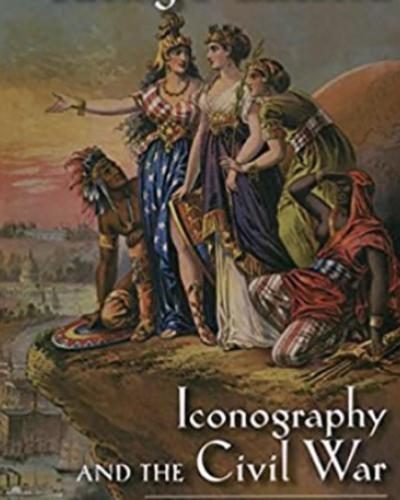
United Apart: Gender and the Rise of Craft Unionism
In the late nineteenth century, most jobs were strictly segregated by sex. And yet, despite their separation at work, male and female employees regularly banded together when they or their unions considered striking. In her groundbreaking book, Ileen A. DeVault explores how gender helped to shape the outcome of job actions—and how gender bias became central to unionism in America.
Covering the period from the formation of the American Federation of Labor in 1886 to the establishment of the Women's Trade Union League in 1903, DeVault analyzes forty strikes from across the nation in the tobacco, textile, clothing, and boot and shoe industries. She draws extensively on her research in local newspapers as she traces the daily encounters among male and female coworkers in workplaces, homes, and union halls. Jobs considered appropriate for men and those for women were, she finds, sufficiently interdependent that the success of the action depended on both sexes cooperating. At the same time, with their livelihoods at stake, tensions between women and men often appeared.
The AFL entered the twentieth century as the country's primary vehicle for unionized workers, and its attitude toward women formed the basis for virtually all later attempts at their organization. United Apart transforms conventional wisdom on the rise of the AFL by showing how its member unions developed their central beliefs about female workers and how those beliefs affected male workers as well.
In the Devil's Snare: The Salem Witchcraft Crisis of 1692
Award-winning historian Mary Beth Norton reexamines the Salem witch trials in this startlingly original, meticulously researched, and utterly riveting study.
In 1692 the people of Massachusetts were living in fear, and not solely of satanic afflictions. Horrifyingly violent Indian attacks had all but emptied the northern frontier of settlers, and many traumatized refugees—including the main accusers of witches—had fled to communities like Salem. Meanwhile the colony’s leaders, defensive about their own failure to protect the frontier, pondered how God’s people could be suffering at the hands of savages. Struck by the similarities between what the refugees had witnessed and what the witchcraft “victims” described, many were quick to see a vast conspiracy of the Devil (in league with the French and the Indians) threatening New England on all sides. By providing this essential context to the famous events, and by casting her net well beyond the borders of Salem itself, Norton sheds new light on one of the most perplexing and fascinating periods in our history.
Border Women: Writing From La Frontera
Border Women rethinks border theory by emphasizing women writers whose work—in Spanish, English, or a mixture of the two languages—calls into question accepted notions of border identities. These writers include those who are already well recognized internationally (Helena María Viramontes, Sheila and Sandra Ortiz Taylor, and María Novaro); those who have become part of the Chicano canon (Norma Cantú, Alicia Gaspar de Alba, and Demetria Martínez); along with some of the lesser-known, yet most exciting, women’s voices from the Mexican border (Rosario Sanmiguel, Rosina Conde, and Regina Swain).
South Central Review states that Border Women is a significant contribution to U.S.-Mexico border studies, and to gender studies as well. It places emphasis on the cultural richness of the border region through the reading of the original and provocative voices of its women.
Regions of Identity: The Construction of America in Women's Fiction, 1885-1914
Examining turn-of-the-century American women s fiction, the author argues that this writing played a crucial role in the production of a national fantasy of a unified American identity in the face of the racial, regional, ethnic, and sexual divisions of the period. Contributing to New Americanist perspectives of nation formation, the book shows that these writers are central to American literary discourses for reconfiguring the relationship among constituent regions in order to reconfigure the nation itself. Analyzing fiction by Sarah Orne Jewett, Florence Converse, Pauline Hopkins, Mar'a Amparo Ruiz de Burton, Kate Chopin, and Sui Sin Far, the book foregrounds the ways each writer s own location on the grid of American identities shapes her attempt to forge an inclusive narrative of America. This disparate group of writers Northerners, Southerners, Californios, African Americans, Chinese Americans, Anglo Americans, heterosexuals, and lesbians reflects the widespread nature of concerns over national identity and the importance of regions to representations of that identity.
Decadence and Catholicism
Romantic writers had found in Christianity a poetic cult of the imagination, an assertion of the spiritual quality of beauty in an age of vulgar materialism. The decadents, a diverse movement of writers, were the climax and exhaustion of this romantic tradition. In their art, they enacted the romance of faith as a protest against the dreariness of modern life. Ellis Hanson teases out two strands—eroticism and aestheticism—that rendered the decadent interest in Catholicism extraordinary. More than any other literary movement, the decadents explored the powerful historical relationship between homoeroticism and Roman Catholicism. Why, throughout history, have so many homosexuals been attracted to Catholic institutions that vociferously condemn homosexuality? This perplexing question is pursued in this elegant and innovative book.
Late-nineteenth-century aesthetes found in the Church a peculiar language that gave them a means of artistic and sexual expression. The brilliant cast of characters that parades through this book includes Oscar Wilde, Charles Baudelaire, J.-K. Huysmans, Walter Pater, and Paul Verlaine. Art for these writers was a mystical and erotic experience. In decadent Catholicism we can glimpse the beginnings of a postmodern valorization of perversity and performativity. Catholicism offered both the hysterical symptom and the last hope for paganism amid the dullness of Victorian puritanism and bourgeois materialism.


